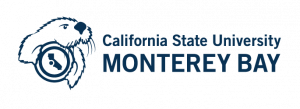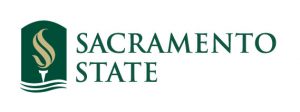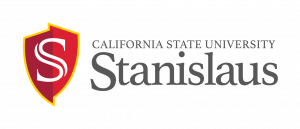What degrees does MLML offer?
MLML offers a Master's of Science (M.S.) degree in marine science.
How is MLML affiliated with the California State University (CSU) system?
MLML serves as the marine science M.S. program for a consortium of 7 CSU campuses: CSU East Bay, CSU Monterey Bay, CSU Stanislaus, Fresno State, Sacramento State, San Francisco State, and San José State. Of those 7 campuses, 5 are currently accepting yearly applications for the MLML M.S. program: CSU East Bay, CSU Monterey Bay, CSU Stanislaus, Sacramento State, and San José State. Every student in the MLML program must officially enroll (and apply for admission) through one of these CSU campuses. Of our current students, about 50% are enrolled through CSU Monterey Bay as their "home campus," and about 50% through San José State University. MLML students register for classes, pay tuition/fees, and receive financial aid through this “home campus,” and this campus also awards the official diploma and transcripts. All classes and academic programs are held at MLML’s main facility in Moss Landing.
How does the application process work?
All applicants must submit one online application to MLML by Feb. 1, and one online application to their chosen CSU campus by Feb. 1. All applicants must then submit supporting documents to MLML by Feb. 15, and supporting documents to their chosen CSU by Feb. 15. More information can be found here.
Who can serve as a Faculty Advisor?
Although there are more than 30 Ph.D.-level researchers at MLML that can help advise students regarding their thesis topic, only the Tenure-Track Faculty can serve as your faculty advisor. So you need to make sure you contact the Tenure-Track Faculty member that fits your interests so you can seek their support and commitment. Other MLML researchers (Consortium Faculty, Research Faculty, Research Affiliates, and Adjunct Faculty) serve as valuable resources with expertise in additional disciplines and can serve as co-advisors.
How much will it cost to finance my education at MLML, and what funding is available?
Tuition and fees vary by CSU campus. The current cost of attendance for each of the 5 CSU consortium campuses currently accepting applications for the MLML program can be found at the following links:
Students are strongly encouraged to secure independent financial support during the duration of their time at MLML. MLML can provide limited financial support in the form of some graduate assistantships (GAs), as well as some internal grants and scholarships. It is the responsibility of the student to contact his/her faculty advisor(s) about GA positions and other potential funding sources. Additionally, each CSU campus may offer campus-specific funding opportunities. It is the responsibility of the student to contact their home campus Financial Aid office, and to complete an annual FAFSA (Free Application for Federal Student Aid) as needed. Many of our students work during their graduate school education and would be happy to provide insight into managing work and school responsibilities at the same time. If you area prospective student interested in getting in touch with current students, please contact MLML's Graduate Program Coordinator.
What internal MLML scholarships are available?
Each spring, MLML awards many competitive scholarships to our Master's students, in recognition of academic merit, community service, and outreach. Many of these scholarships were established in honor of former faculty and staff, and are made possible by alumni, the Student Body, the Quilt Guild, visitors to our annual public Open House, and other generous members of the MLML community.
Typically, MLML scholarships are announced to our current student body after Fall semester, with applications due early in spring semester, awards announced in April, and winners celebrated during the final week of spring semester at our annual MLML Scholarship reception.
Only currently-enrolled MLML M.S. students are eligible to apply. More information can be found here.
Can I enroll as a part-time student?
Students should plan to be enrolled full-time for the duration of their tenure, though some students enroll half-time while completing the thesis.
Can I transfer courses taken at another institution?
Once in the program students may transfer up to 6 units of coursework completed at another institution. Courses taken to fulfill the requirements of another degree are not eligible for transfer credit, but can be used to waive a required course.
Where can I find classes available at MLML?
For all classes offered at MLML, view the Course Catalog. For classes offered this semester, view the Class Schedule.
Is there a place online where my professor has posted a list of books/materials I will need for my class?
This information is typically listed in the course syllabus. When enrolled, you can check to see if the professor has uploaded the syllabus on Populi → Courses (bottom right corner).
Does MLML have a minimum GPA or GRE score required for admission?
MLML has no GPA or GRE minimums, but admitted students generally have a GPA of 3.2 or greater and GRE scores in the upper 30th percentile. CSU campuses generally set a minimum GPA for admission, and all MLML applicants must meet CSU minimums for admission. MLML does not require applicants to take the GRE, but a good score on either the GRE general test or a relevant GRE subject test can improve an applicant's chances for admission. As such, MLML strongly recommends that prospective students take the GRE before applying.
How will my application be evaluated?
MLML evaluates applications holistically, taking into account past academic performance, relevant professional experience, and the applicant’s likelihood of success within our interdisciplinary program. The field of marine science is highly competitive, as is acceptance into the MLML M.S. program. Students accepted into the program typically have a well-rounded background in science and math in general and the marine sciences in particular, and research experience. Applicants should email the potential MLML faculty advisor(s) to whom they are considering applying for more specific guidance.
Do you offer tours for prospective students?
At this time, MLML does not offer organized tours for prospective students, but we encourage you to contact a member of the MLML faculty directly to schedule an individual tour of the lab and to discuss the graduate program.
Where do students live? Is student housing available?
Most of our students live within a 30-minute commute of the lab—in Santa Cruz, Prunedale, Salinas, Marina, Seaside, and Monterey. MLML does have very limited student housing (4 bedrooms in 2 shared houses) on campus; these rooms are leased to students each year for the duration of the academic year, with preference given to new incoming students each year and with a maximum of a one-year lease per student.
How many students are accepted each year?
MLML’s M.S. program is highly competitive. While there is no set maximum or minimum of students accepted each year, MLML generally accepts around 15 new students each year. This number varies from year to year depending on individual faculty advisors, current research projects underway in their labs, and the number or students they are currently looking to accept into their labs. For the last few years, our acceptance rate has been about 25% of applicants.
Does MLML offer a scientific diving program?
Yes. Scientific diving has been an integral part of MLML since the labs opened in 1965. For more information, check out the dive program website.
What is campus life like at MLML?
MLML prides itself on its sense of community and the cohesion of students, faculty, and staff. The campus is the foundation of this community, and you will often find students and faculty working together in one of several meeting and study rooms. In addition, the student body has created a yearly tradition of planning community events including: Halloween party, lab-wide bowling and bonfires, and the annual public Open House.






